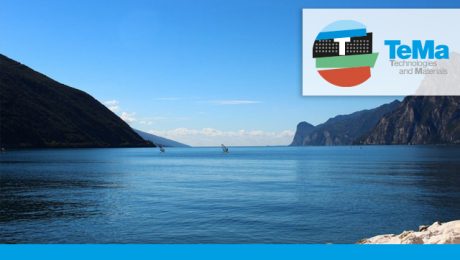TeMa participates in the Cologne International Fair for sports and swimming pools, 7-10 November 2017
As soon as we are back from Russia, we are preparing for the next month’s appointment.
From 7 to 10 November you will find us with our information desk in the section ‘Playground planning and equipment – Shock absorbing materials’ of the Cologne International Fair for sports areas and swimming pools.
In detail, we are in Hall 10.2, Stand B051.
More information here!

- Published in BUILDING, CORPORATION, Exhibitions and events, news
TeMa at the Moscow Road Expo, Crocus Expo 10-13 October 2017
The ROAD EXPO is one of the most important road shows in Russia. TeMa, is present at the event and presents its range of products dedicated to road applications.
- Published in CORPORATION, Exhibitions and events, GEO, news
Building dossier: what is it, what is it for? Focus: The Ischia earthquake
There have been several bills that have tried to bring this legal instrument to fruition, but it has never completed the parliamentary approval process.
What is the Building file
The building dossier is a legal institution, consists of a dossier , kept by the owner of each building or by the condominium administrator, on the state of health of the building . Information concerning the building is noted on the file:
• of identification type
• design
• structural
• plant
• environmental
The goal is to arrive at a suitable cognitive framework that includes the construction phases of the same, and the recording of the changes made with respect to the original configuration, with reference to the static, functional and plant components. The dossier, for its purposes, provides for an update with a frequency not exceeding ten years.
What is it for?
The building dossier is a tool for monitoring and preventing the state of conservation of the building stock aimed at identifying the risk situations of the buildings and planning over time renovations and maintenance to improve the quality of the buildings manufactured. The intention is to give even a further possibility, during the sale and purchase, to the future owners of a property to be able to evaluate the affective state of the property. So that they can prefer stable with a better conservative state. This could trigger a virtuous circle, which involves everyone in keeping the buildings as close as possible to solid and safe structures.
The Ischia earthquake
It should make us think that we can die for a earthquake of magnitude four, as happened recently on the island of Ischia , a territory notoriously vulnerable not only for seismic risk, but also volcanic and hydrogeological. What happened was therefore predictable, since collapsing were those houses that sinned in elementary building rules.
To certify the state of security of the buildings with the building dossier could represent a valid safeguard and civil prevention measure.
The report on the state of health of the Environment arrives at the Parliament
On 6 July, the long-awaited Report on the state of health of the Environment of our Country was transmitted to Parliament. The document takes place the previous report dating back to 8 years earlier, dated 2008.
The document has been realized embracing the guidelines of the DPSIR model ( Driving forces, Pressures, State, Impacts, Responses ): this descriptive model aims to identify the sequences of cause- effect of the interactions between the economic, political and social systems with the environmental components in order to provide a broader and more complete vision aimed at the development of environmental protection policies.
The report on the state of health of the environment is a useful update on the main environmental indicators of our country but also a useful tool for those who want to deepen scientifically the situation of the Italian environment.
A job that allows you to have a 360 ° view of our territory and its biodiversity, its strengths and its weaknesses. Below we mention the most significant. Among the positive points, Italy is, for example, among the countries with the highest energy efficiency , with technologies and performances that place us at the forefront of the world. Compared to the critical issues, however, Italy is still lagging behind the waste, purification and air quality sectors in the cities.
The 2016 Report on the State of the Environment was carried out under the direction of the Ministry of the Environment and of the protection of the territory and the sea. The project and editorial and scientific coordination have been curated by representatives of ISPRA in collaboration with a committee of academic experts from the University of Rome “Tor Vergata”, National Institute of Astrophysics, Euro-Mediterranean Center on Climate Change, University of the Studies of Naples Federico II.
Other bodies involved were the National Agency for New Technologies, Energy and Sustainable Economic Development – ENEA, Italian Space Agency – ASI, National Association of Italian Municipalities – ANCI, National Association for Irrigation Reclamation and Land Improvement.
You can read the full report here
- Published in CORPORATION, news
The report on the state of health of the Environment arrives at the Parliament
On 6 July, the long-awaited Report on the state of health of the Environment of our Country was transmitted to Parliament. The document takes place the previous report dating back to 8 years earlier, dated 2008.
The document has been realized embracing the guidelines of the DPSIR model ( Driving forces, Pressures, State, Impacts, Responses ): this descriptive model aims to identify the sequences of cause- effect of the interactions between the economic, political and social systems with the environmental components in order to provide a broader and more complete vision aimed at the development of environmental protection policies.
The report on the state of health of the environment is a useful update on the main environmental indicators of our country but also a useful tool for those who want to deepen scientifically the situation of the Italian environment.
A job that allows you to have a 360 ° view of our territory and its biodiversity, its strengths and its weaknesses. Below we mention the most significant. Among the positive points, Italy is, for example, among the countries with the highest energy efficiency , with technologies and performances that place us at the forefront of the world. Compared to the critical issues, however, Italy is still lagging behind the waste, purification and air quality sectors in the cities.
The 2016 Report on the State of the Environment was carried out under the direction of the Ministry of the Environment and of the protection of the territory and the sea. The project and editorial and scientific coordination have been curated by representatives of ISPRA in collaboration with a committee of academic experts from the University of Rome “Tor Vergata”, National Institute of Astrophysics, Euro-Mediterranean Center on Climate Change, University of the Studies of Naples Federico II.
Other bodies involved were the National Agency for New Technologies, Energy and Sustainable Economic Development – ENEA, Italian Space Agency – ASI, National Association of Italian Municipalities – ANCI, National Association for Irrigation Reclamation and Land Improvement.
You can read the full report here
- Published in CORPORATION, news
From the roof to the road, electricity for transport is finally clean
How many Kilometers can you take if you take the charge from the roof of your house? As long as the battery lasts, we answer!
From today it seems that everything is possible: even recharge your electric car from the energy accumulated from the roof of your own home! And all thanks to the Tegosolar photovoltaic system, the Italian patent of Canadian tile . It happens in Vittorio Veneto, where the first electric car charging station was installed at the headquarters of Iwis , the European holding company for buildings and major works in Via dell’Industria.
In reality it is the fifteenth charging station installed in the province of Treviso, but as you may have guessed, in this case everything is different: Iwis wanted to make available to its employees, collaborators and guests, free, a ‘ clean and pure energy , obtained with the innovative Tegosolar method, a photovoltaic system that uses the triple-junction amorphous thin film silicon technology to produce electricity from renewable sources, with which the production site of Vittorio Veneto and part of the Group’s Italian plants.
This is a small but significant step , which is mainly used to stimulate the culture of sustainability and attention to the environment, as announced by Alessandro Mazzer, Marketing Manager of the Iwis group, who in Tegola Canadese, among others also Tema, Fi-Ve and Geobitec, which deal with energy efficiency for residential, commercial and industrial buildings, both public and private.
Companies with a high level of innovation are always very self-deprecating, and for this reason, once they started to equip the fleet of electric cars, the traditional cars were marked with a sad smiley, because unlike electric ones, they will not be able to quench their thirst with clean energy!
- Published in CORPORATION, news
Earthquake: Interventions on roads, homes and businesses
The first phase of the road repair program affected by the earthquake includes 497 priority actions on 124 roads, with a total amount allocated of 474 million euro.
If you comply with the advances, the Anas, as the implementing entity, should have carried out work assignment procedures within the month of May for 40 million euros, and within that of June for 100 million, bringing in the coming days the construction roads to 40 million operational interventions. As Anas said, it was not possible to intervene earlier on the work because all the interventions need relief and complex design phase, given the damage.
The Earthquake Plan had identified three priorities for intervention : State Road 685 “of the Three Valleys Umbres”, severely compromised by the strong shock of October 30, the Regional Road 209 ” Valnerina “, involved in a landslide of about 60 thousand cubic meters that has diverted the course of the river Nera, and finally the access road to Castelluccio di Norcia, with the securing of the bottom and rocky fronts. Currently we know of the publication of five tenders operating in these localities, for a total value of 16.6 million euros.
The Solidarity Fund of the European Union
In the meantime, the implementation of the EU 1.2 billion Euro Solidarity Fund is under way, which will support the reconstruction and recovery of economic activities hit by the earthquake. The object of use of these funds is for temporary housing, and for rehabilitation operations and measures to protect the public cultural heritage. Only the approval of the European Parliament and then of the Council is expected. A first tranche of aid worth € 30 million has already been allocated at the end of 2016.
The EIB 5 billion agreement
La
EIB – European Investment Bank and the Cassa Depositi e Prestiti have meanwhile signed an agreement to provide the first of the five billion allocated for the reconstruction of houses and businesses damaged by the earthquake. The production facilities such as warehouses, warehouses, instrumental goods , stocks and the like will be recovered and secured beyond the houses. The second billion in sight will instead be dedicated to the reconstruction of public buildings such as schools, hospitals, courts and administrative offices.
The distribution of resources will take place through banking system , which, once they have received the damage certification and the request for intervention, will issue the necessary figures directly to the professionals and companies in charge of designing and realizing the works. The agreement between the State and the Banks is based on the collection of the loan as a twenty-five-year tax credit, made sustainable thanks to the low rates applied by the EIB.
- Published in CORPORATION, news
Our next Technical Seminars in June and July 2017
- June 27th 2017:
TECHNIQUES FOR IMPROVING LANDS AND CALCULATION MODELS – at the Treviso Engineers’ Convention Room
- June 28th 2017:
ENVIRONMENTAL GEOTECHNOLOGIES APPLIED TO THE STRUCTURES – 2.30 pm / 6.30 pm – at DE GUSTO DOLOMITI hall – Via Sagronia, 35, 32100 BELLUNO
- 5 July 2017:
LAND IMPROVEMENT TECHNIQUES AND CALCULATION MODELS – 2.30 pm – Hotel Fortino – Strada del Fortino 36 – TURIN
- Published in CORPORATION, GEO, news










